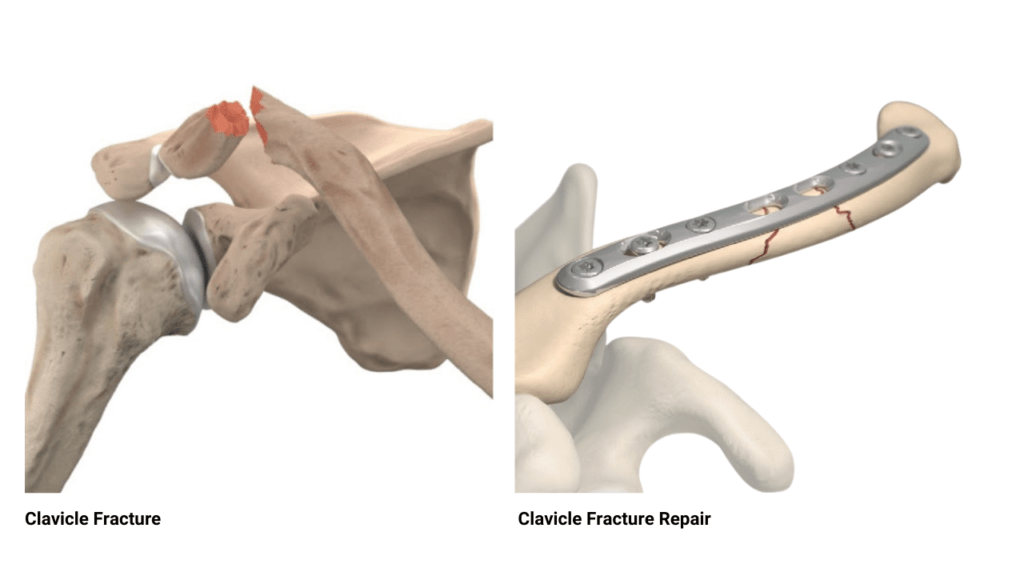What is it?
The clavicle (or collarbone) connects the sternum (breastbone) to the shoulder. Its superficial location on top of the shoulder makes it one the most commonly broken bones in the body. Most fractures occur from a direct blow to the collarbone or a fall onto an outstretched hand. This is commonly seen in contact sports such as football and hockey, and in cyclists who fall over their handlebars.
Signs and symptoms of a clavicle fracture
Common symptoms of clavicle fractures include:
• Visible deformity along the collarbone
• Pain with movement of the arm
• Clicking and shifting along the collarbone
Diagnosis
In the office, a complete history and physical exam is obtained. The clavicle is examined for any deformity and tenderness to palpation. X-rays of the clavicle are essential to diagnosing and determining the severity of clavicle fractures.
Treatment
Conservative treatment of clavicle fractures is recommended for minimally displaced fractures, where the bone has not shifted significantly. Such treatments include rest, ice, sling immobilization, and physical therapy. Follow-up X-rays are necessary to ensure the fracture is healing in a good position.
Surgical treatment of clavicle fractures is recommended in cases where the broken ends have shifted significantly out of place. Clavicle fracture repair aims to realign the broken ends and hold them in place with anatomically contoured plates and screws. This is done in an outpatient setting under regional anesthesia, allowing patients to return home the same day. In conjunction with supervised physical therapy, clavicle fracture repair has been shown to successfully heal the broken collarbone and allow patients to return back to their sport or activity.

RECOVERY
Following surgery, patients are immobilized in a sling for four weeks (including sleep for 2-3 weeks). Physical therapy begins around two weeks after surgery. Early range of motion is initiated, followed by strengthening at six weeks. Patients can return to aerobic activity, such as running or cycling, six weeks postoperatively. Return to contact sports, such as football or lacrosse, is allowed approximately 3-4 months after surgery.
